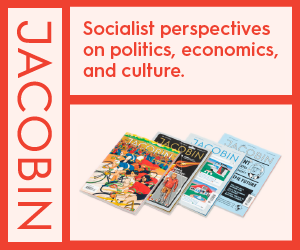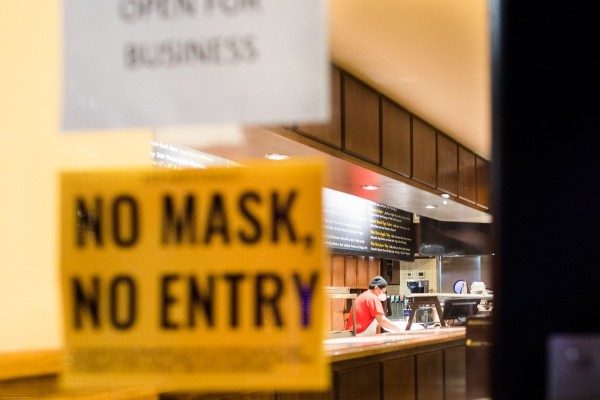Killing a neighbourhood
For residents of Montréal’s Parc-Ex, a new university campus brings new hardships
_800_600_90.JPG)
Université de Montréal overlooking Outremont, Montréal. Photo by Laurent Bélanger/Wikimedia Commons.
Last September, a report in the Guardian by journalist Flavie Halais examined the gentrification of Montréal borough Parc-Extension, one of Canada’s poorest neighbourhoods in which 38.4 percent of residents are considered “low-income.” The same month, a CBC article shared the perspective of a concerned resident who claimed that “one landlord halved the size of the apartments to double the number of units while boosting the rent, ‘because they’re beside a campus that’s opening soon and more students can come in.’”
The central culprit behind this accelerated gentrification is the new University of Montréal (UdeM) science complex, established on a former railway yard between Outremont, an affluent francophone neighbourhood, and Parc-Extension—“Parc-Ex” to locals—an immigrant and working-class district where 61 percent of residents were born outside of Canada. The project, known as “MIL,” was completed in 2019 at a cost of $358 million, including $84 million from the federal government and $145 million from the government of Québec. According to UdeM rector Guy Breton, the project is intended to provide “a unique opportunity to bring the university community closer to innovative companies [and] to community groups.”
The University of Montréal’s $348 million science complex. Photo by Leo Chester-Trudel.
Selling development
From the first, the language surrounding the MIL project has been laminated with a veneer of self-congratulatory promises of “integration” and “sustainable development”—terms that are meaningless without accompanying structural proposals. Perhaps the most egregious of these empty aphorisms is the title of an article on UdeM’s website, “MIL Campus: birth of a neighbourhood,” betraying the hubris of real estate developers who promote their infrastructure projects as communitarian innovations rather than investments for private gain.
In the same article, the author claims that MIL will integrate “into the surrounding neighbourhoods and follow principles of sustainable development.” The project’s planners, we are told, sought to “devise ways of connecting the MIL Campus to the neighbourhoods to the north [Parc-Extension], previously blocked by the railroad tracks.”
This “connection,” which eventually materialized in the form of a footbridge linking the campus to the nearby Acadie metro station, was marked as a “key component” by the project’s designer, architect Anik Shooner. The claim that the footbridge “has social significance” is laughable at best and a deception at worst. “Kids in Park Ex,” Shooner states, “will be able to cross the bridge to the campus”—a footbridge enchanted with magical powers of upward economic mobility.
Once a “thriving Greek town,” Parc-Ex has grown into a cosmopolitan mosaic of cultural identities, with a substantial presence of recently landed South Asian immigrants. Its street corners are noted for their distinctive vibrancy and community, an international sensory immersion encompassing diverse cultural signals: the scent of Punjabi cuisine wafting from open apartment windows, Afrobeat blaring from shop entrances, and elderly Greek men chatting and smoking cigars on park benches.
To put it bluntly: Parc-Ex does not need the “birth of a [new] neighbourhood.” To suggest that it does is patronizing and insulting. What the neighbourhood does need is social and material investment. Nonetheless, those behind the MIL project continue to insist on this talking point and spew propagandistic fantasies in its defence: “Pierre St-Cyr recalls some of the moving statements made by Park Ex residents at the 2007 consultations. ‘A 10-year-old boy spoke for his mother, who couldn’t speak French. He said how important it was to build a university in this neighbourhood, because nobody in his family had a university diploma, but he was going to get one.’” The MIL newsletter imbues the project with a divine romanticism, fetishizing a single interaction of a decade ago in a cheap, sentimental appeal.
Ratcheting up the housing crisis
Whether by intention or not, such mystification avoids the reality confronting Parc-Extension today in the form of COVID-19. The borough has emerged as an infection hotspot alongside other immigrant-dense Montréal neighbourhoods such as St-Michel and Montréal-North, a development that Flavie Halais could not have predicted in her September 2019 report on worsening gentrification.
Since the start of the pandemic, things have only gotten worse for Parc-Ex residents, most of whom are renters. Concerns around poor living conditions and evictions have increased due to the economic devastation caused by lockdown measures. As reported in the borough newspaper, renter complaints range from escalating landlord harassment, such as “threats to change the locks, cut off water and electricity, and throw out the family’s belongings,” to “landlords… actively discriminating against families and hiking rent prices with the goal of attracting students looking for housing close to the UdeM campus.”
In 2018, Ron Basal, project manager for the BSR real estate group, spoke honestly with the Globe and Mail about his project to “transform” the multipurpose Hutchison Plaza building in Parc-Ex by forcing the “departure of small businesses, religious spaces, community groups and tenants” and helping to advance gentrification: “Will a trend start? Absolutely. It’s a beautiful area.” BSR Group’s website contradicts this statement, however, affirming instead its vision to design “spaces that derive their originality because they are in harmony with the elements that surround them.”
Fencing surrounding a construction site near the MIL campus, graffitied with the words “Social housing.” Photo by Leo Chester-Trudel.
Parc-Ex: Under attack from all sides
Parc-Extension is today the victim of a tripartite assault: first, from the dire economic conditions caused by the coronavirus. Second, from the forces of gentrification, including UdeM’s MIL project and opportunistic landlords, and exacerbated by the wider housing crisis. And third, from government inaction. In response, we must pressure politicians to immediately renew the federal eviction ban, which expired in July, and consider strategies of direct action such as rent strikes and blocking eviction court proceedings.
As we near the first anniversary of UdeM’s new science complex, it must be stressed that, so far, the MIL project’s only effect on the majority working-class residents of Parc-Extension has been displacement, not connection. Indeed, according to Halais’s 2019 report, of the MIL project’s 1,300 new housing units, “none of the housing is reserved for current Parc-Ex residents.” This “birth of a neighbourhood” will likely mean the death of Parc-Extension—whose federal MP, curiously, is none other than our current prime minister.
Emmanuel Adams is a writer and journalist, as well as a community-involved activist and medical student at McGill University. Emmanuel holds a BA in English Literature and Philosophy from McGill University.
Leo Chester-Trudel is a multimedia journalist currently finishing up his undergraduate degree in History and Photography at Concordia University.










